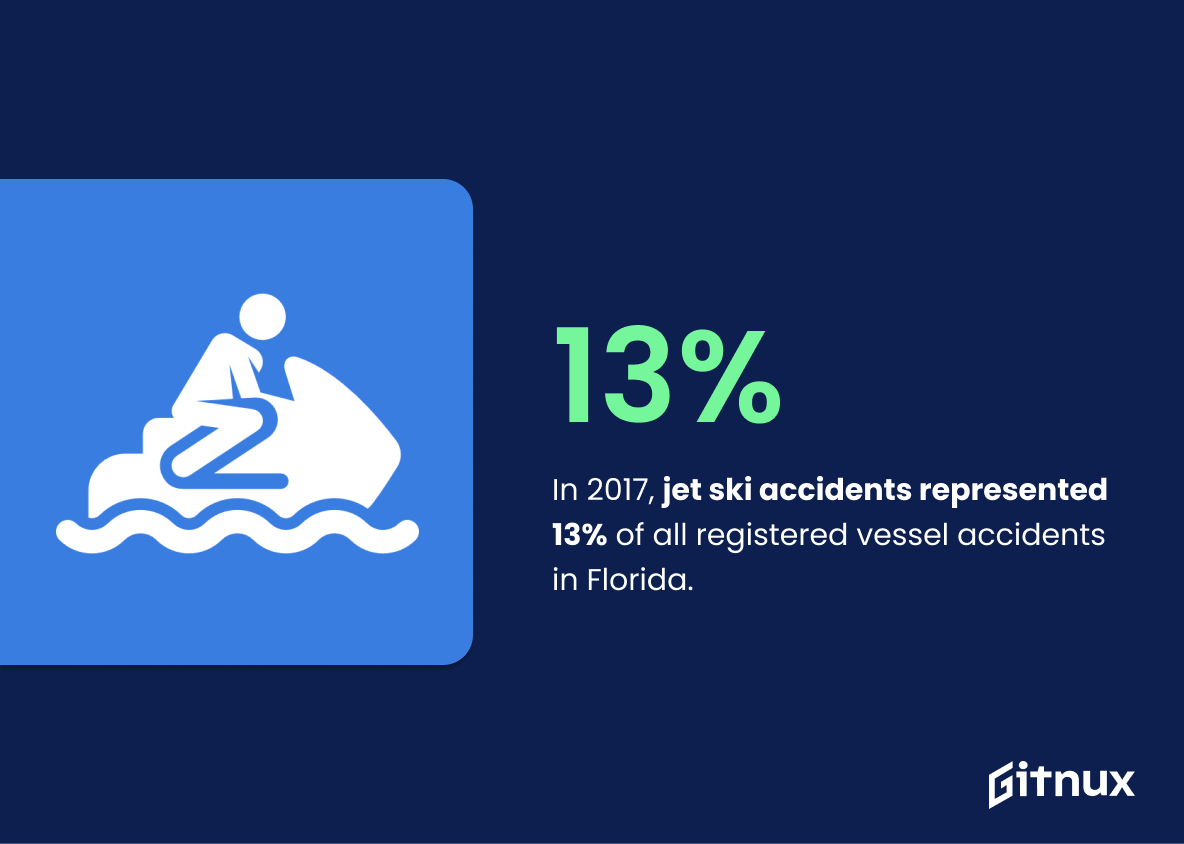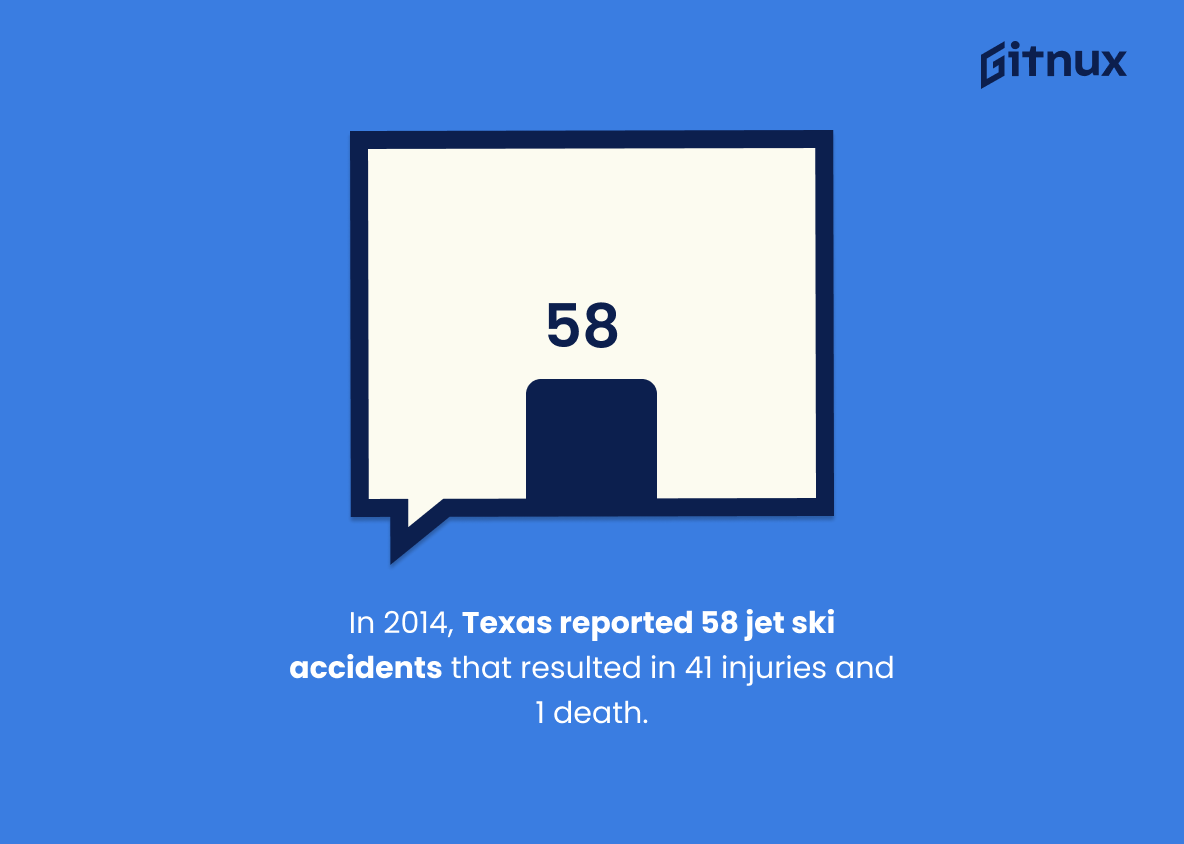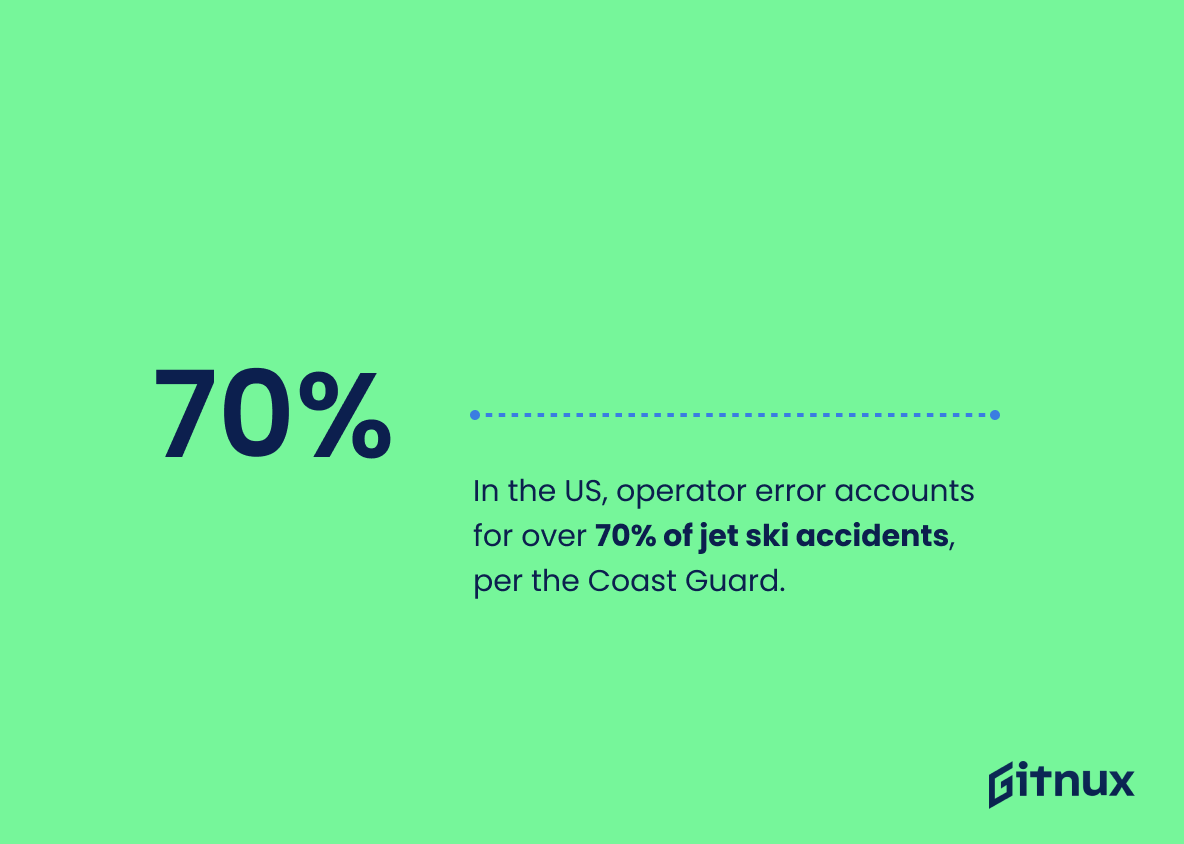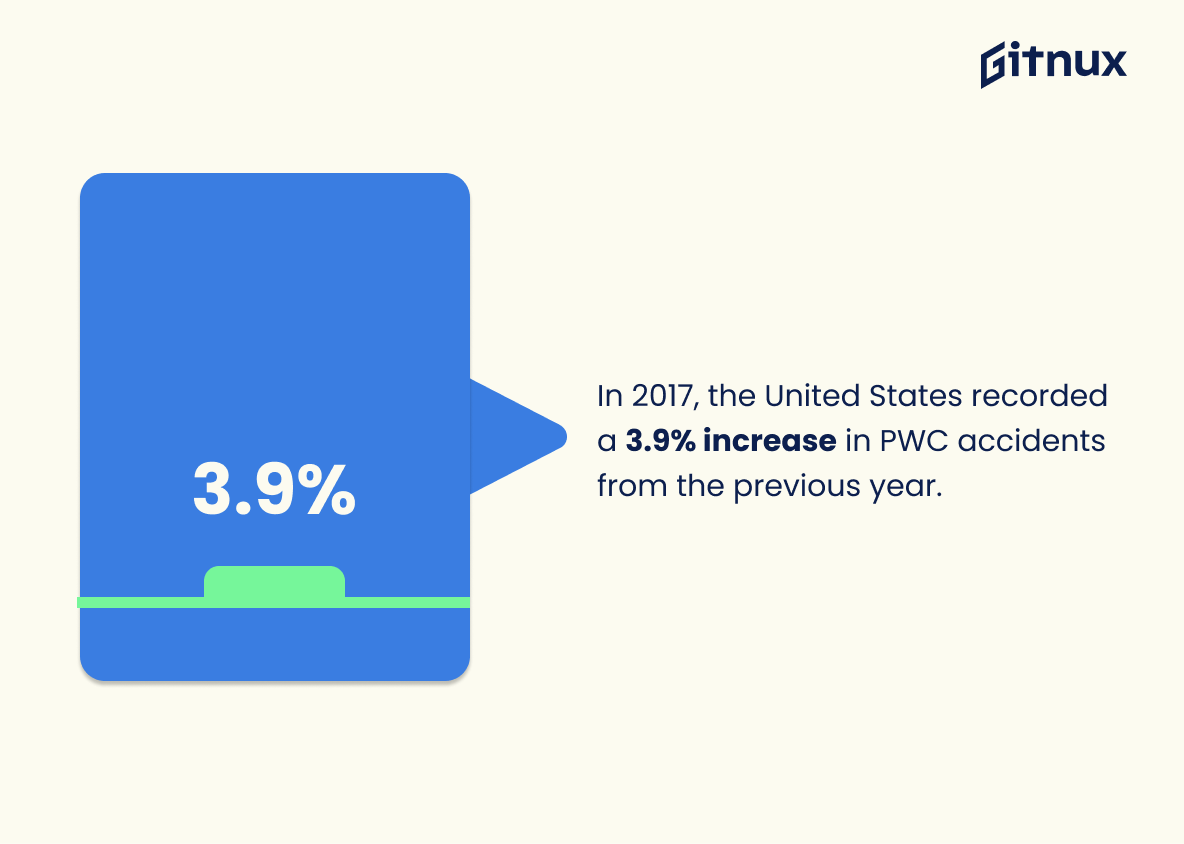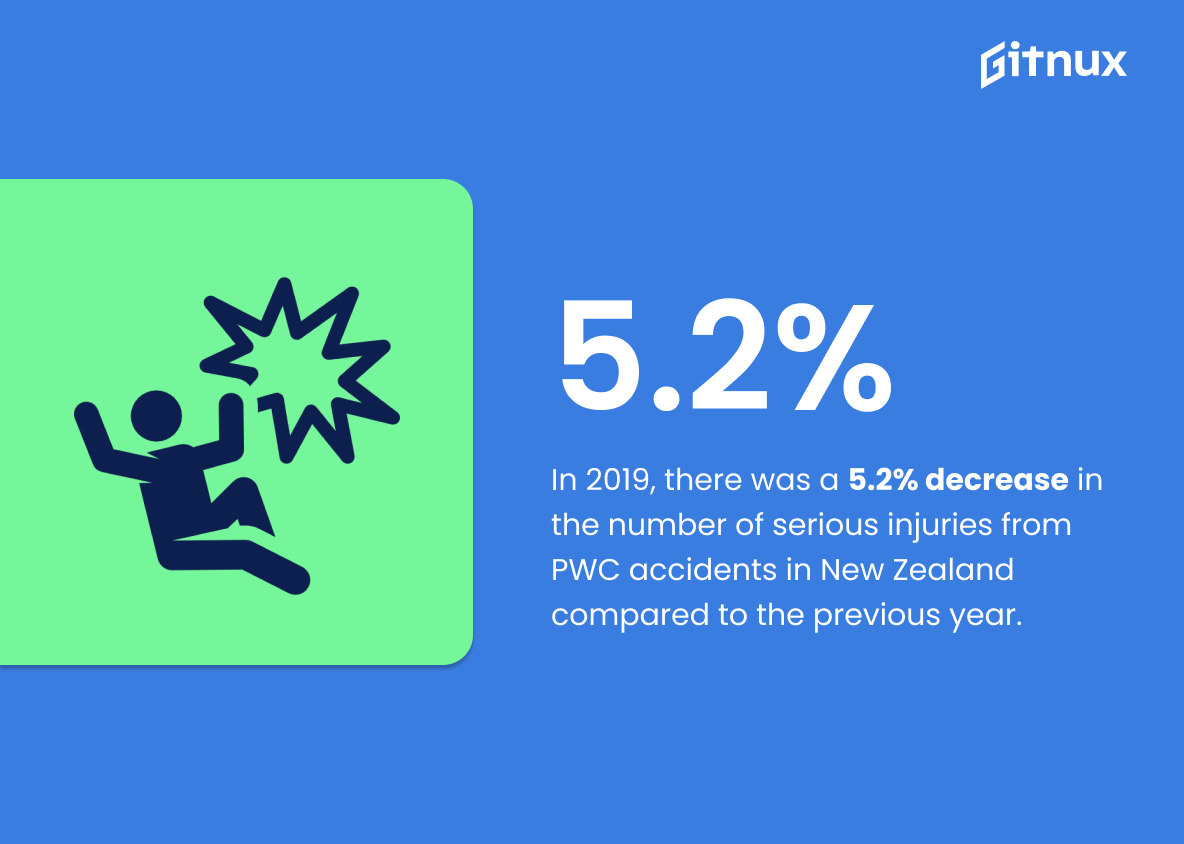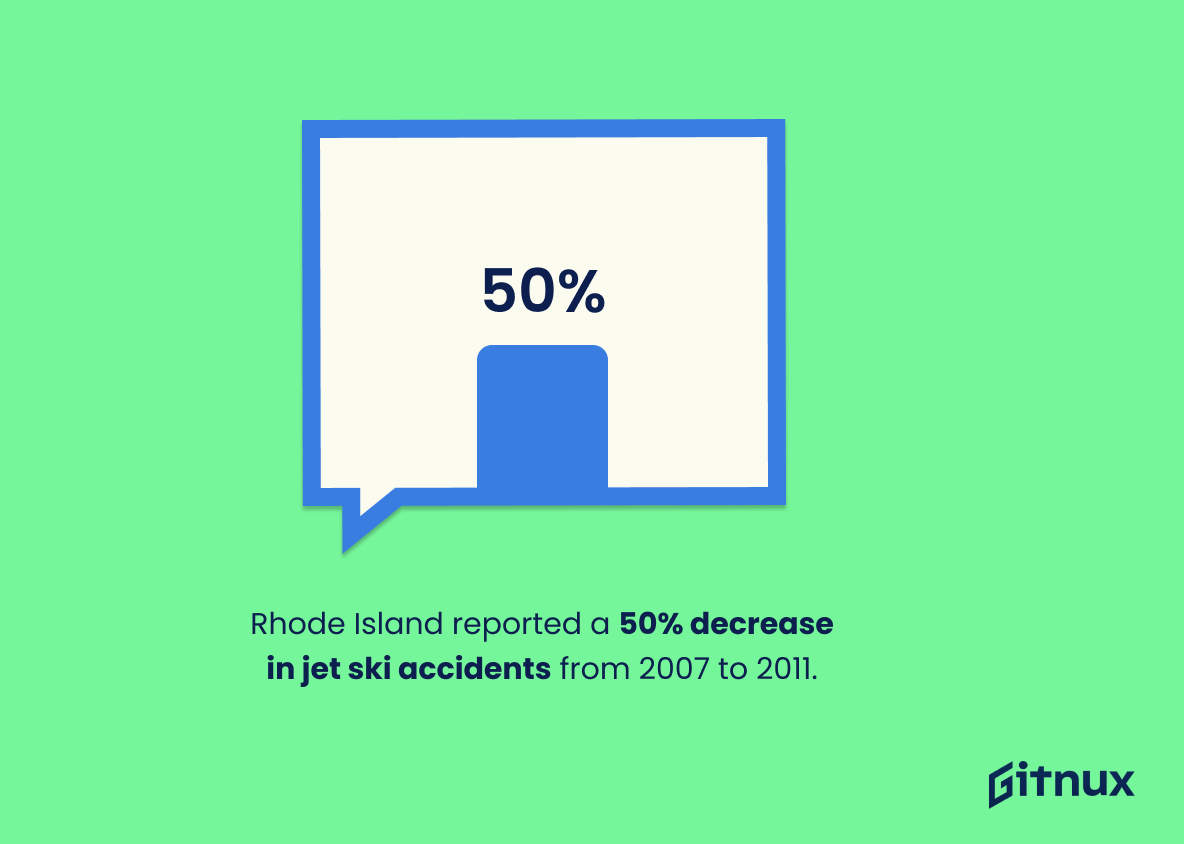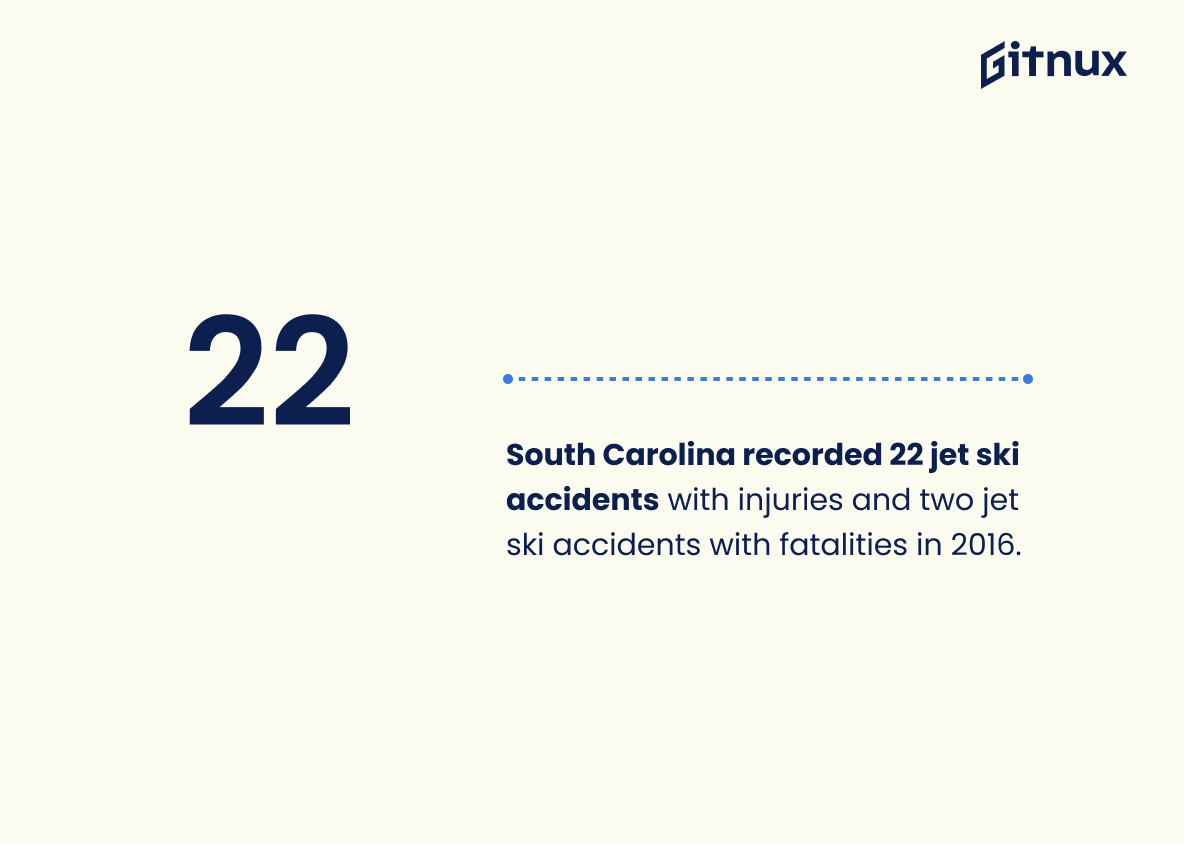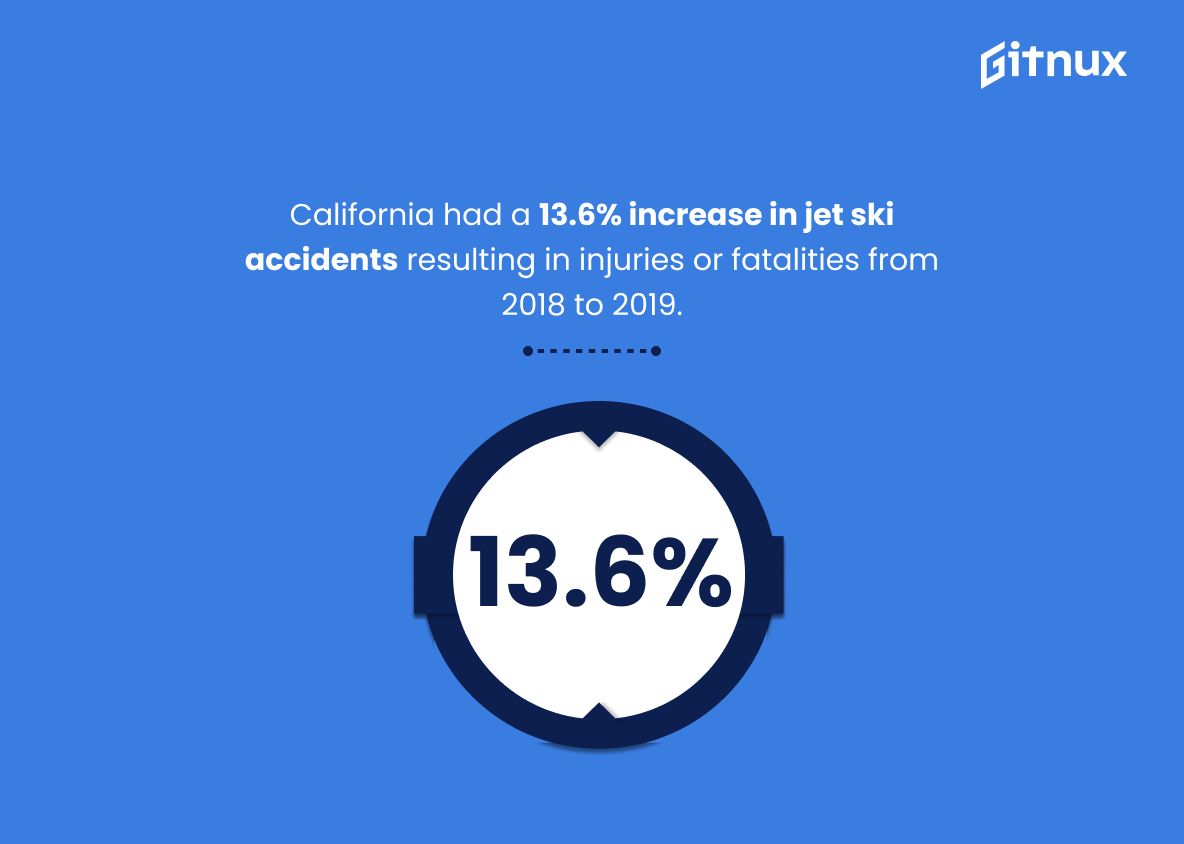Jet skiing is a popular recreational activity enjoyed by many people around the world. Unfortunately, jet ski accidents can occur and cause serious injury or even death. In this blog post, we will be looking at some of the statistics related to jet ski accidents from various countries including the United States, Australia, France, New Zealand and more. We’ll explore how often these types of incidents happen as well as what factors may contribute to them in order to gain a better understanding of their prevalence and potential causes.
Jet Ski Accident Statistics Overview
In 2017, jet ski accidents represented 13% of all registered vessel accidents in Florida.
This statistic is a stark reminder of the potential danger of jet skiing in Florida. It highlights the fact that jet ski accidents are a significant portion of all registered vessel accidents in the state, and should not be taken lightly. It serves as a warning to jet ski enthusiasts to be extra cautious when out on the water.
In 2014, Texas reported 58 jet ski accidents that resulted in 41 injuries and 1 death.
This statistic serves as a stark reminder of the potential dangers of jet skiing. It highlights the fact that, despite the fun and excitement associated with the activity, jet skiing can be a risky endeavor, with serious consequences. The fact that one death was reported in 2014 alone is a sobering reminder of the importance of taking safety precautions when jet skiing.
In the United States, more than 70% of jet ski accidents are caused by operator error, according to the United States Coast Guard.
This statistic is a stark reminder of the importance of proper jet ski operation. It highlights the fact that the majority of jet ski accidents are preventable, and that operators must take the necessary steps to ensure their safety and the safety of those around them. It serves as a warning to those who may be considering jet skiing, and emphasizes the need for proper training and safety precautions.
In 2017, the United States recorded a 3.9% increase in PWC accidents from the previous year.
This statistic is a stark reminder of the dangers of PWCs, as it shows that the number of accidents involving them has risen significantly in the past year. It is a clear indication that more needs to be done to ensure the safety of those who use these vehicles, and to prevent further accidents from occurring.
Over one-third of all injuries in boating accidents in Tennessee in 2017 were associated with PWC use.
This statistic is a stark reminder of the dangers associated with PWC use in Tennessee. It highlights the need for boaters to be aware of the risks and take the necessary precautions to ensure their safety. It also serves as a warning to those considering using a PWC in Tennessee, as it shows that the risk of injury is significantly higher than with other types of boating.
In 2019, there was a 5.2% decrease in the number of serious injuries from PWC accidents in New Zealand compared to the previous year.
This statistic is a testament to the progress made in reducing the number of serious injuries from PWC accidents in New Zealand. It shows that the efforts to increase safety awareness and reduce the risk of accidents are paying off. This is an encouraging sign for anyone who enjoys jet skiing and wants to stay safe while doing so.
Rhode Island reported a 50% decrease in jet ski accidents from 2007 to 2011.
This statistic is a testament to the effectiveness of safety measures taken in Rhode Island to reduce jet ski accidents. It shows that the state is taking the necessary steps to ensure the safety of its citizens and visitors while enjoying the waters. This is an encouraging sign for anyone considering jet skiing in the area, as it demonstrates that the state is taking the necessary precautions to ensure a safe and enjoyable experience.
South Carolina recorded 22 jet ski accidents with injuries and two jet ski accidents with fatalities in 2016.
This statistic is a stark reminder of the potential dangers of jet skiing. It highlights the fact that, while jet skiing can be an enjoyable activity, it can also be incredibly hazardous if proper safety precautions are not taken. The two fatalities in 2016 demonstrate the severity of the consequences of jet ski accidents, and serve as a warning to those who may be considering taking part in the activity.
In the United Kingdom between 2013 and 2017, there were 1,678 jet ski incidents handled by the Coast Guard.
This statistic paints a vivid picture of the prevalence of jet ski incidents in the United Kingdom over the past five years. It serves as a stark reminder of the potential dangers of jet skiing and the importance of taking safety precautions when operating a jet ski.
California had a 13.6% increase in jet ski accidents resulting in injuries or fatalities from 2018 to 2019.
This statistic is a stark reminder of the potential danger of jet skiing, as it shows a significant increase in the number of jet ski accidents resulting in injuries or fatalities from 2018 to 2019. It serves as a warning to jet ski enthusiasts to be extra cautious when out on the water.
Conclusion
Jet skiing is a popular recreational activity, but it can also be dangerous. The statistics show that jet ski accidents are common in many countries around the world and have been increasing over time in some areas. In 2019, the United States Coast Guard reported 721 jet ski accidents across the country. Personal watercraft (PWC) accidents involving injury decreased by 1.6% in Florida from 2017 to 2018 while they increased 13.6% from 2018 to 2019 in California. Alcohol was found to be a contributing factor for 5% of PWC accidents in New South Wales, Australia and males were involved with 84.5% of all PWC accident between 2007-2011in the US according to data collected by various sources such as state governments and coast guards worldwide . It is important for people who use personal watercrafts or any other type of vessel on waterways take safety precautions seriously so that these numbers do not continue rising year after year
References
0. – https://www.boatbeat.org
1. – https://www.www.dnr.sc.gov
2. – https://www.www.gov.uk
3. – https://www.uscgboating.org
4. – https://www.www.dem.ri.gov
5. – https://www.myfwc.com
6. – https://www.www.uscgboating.org
7. – https://www.www.tn.gov
8. – https://www.tpwd.texas.gov
9. – https://www.www.maritimenz.govt.nz
